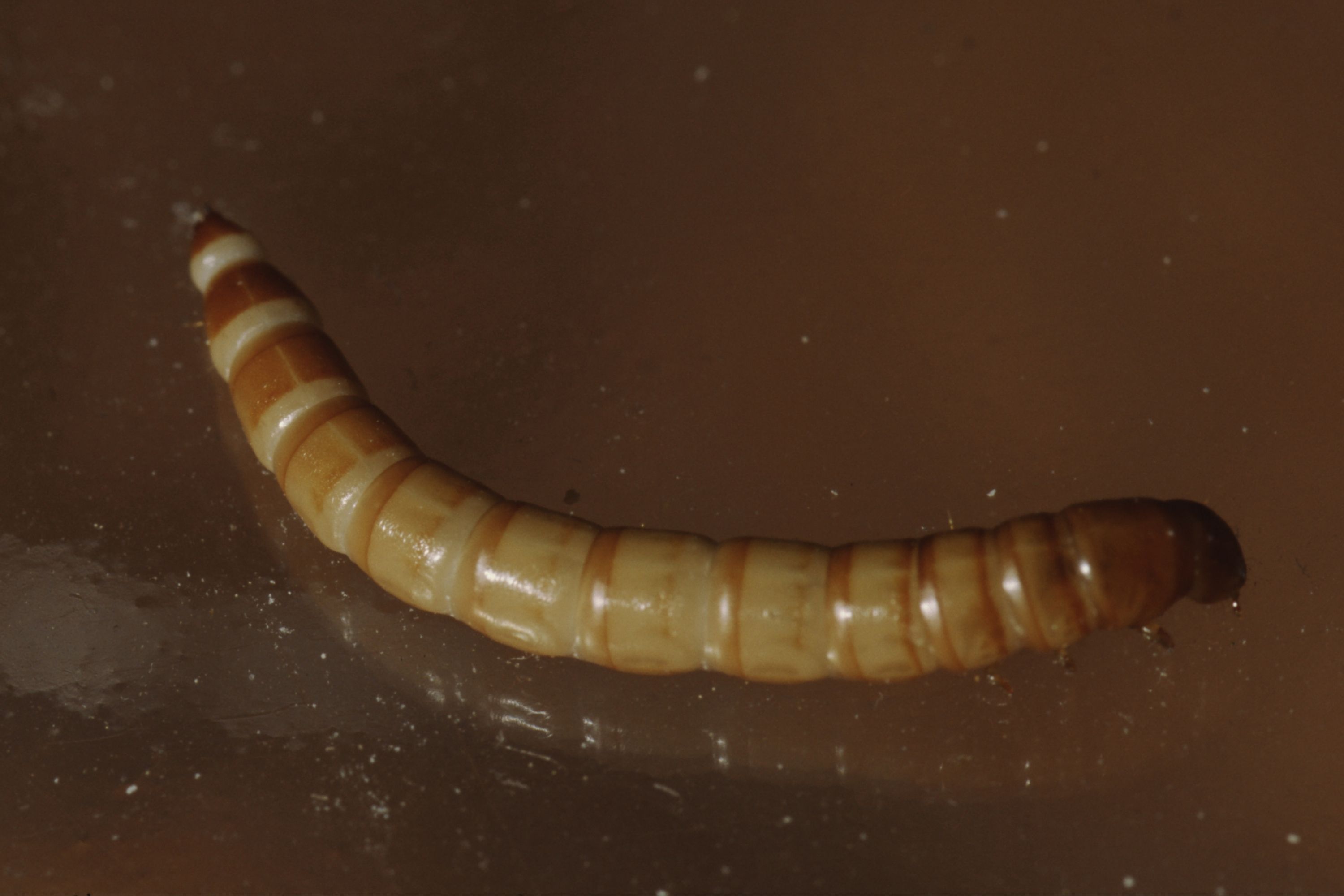Mealworm
(Tenebrio molitor)

Description
Mealworms are the larval form of the mealworm beetle, Tenebrio molitor, a species of darkling beetle. Like all holometabolic insects, they go through four life stages: egg, larva, pupa, and adult. Larvae typically measure about 2.5 centimetres (0.98 in) or more, whereas adults are generally between 1.25 to 1.8 centimetres (0.49 to 0.71 in) in length. The mealworm beetle breeds prolifically. Mating is a three-step process: the male chasing the female, mounting her, inserting his aedeagus, and injecting a sperm packet. Within a few days the female burrows into soft ground and lays eggs. Over a lifespan, a female will, on average, lay about 500 eggs. After four to 19 days the eggs hatch. Many predators target the eggs, including reptiles. During the larval stage, the mealworm feeds on vegetation and dead insects and molts between each larval stage, or instar (9 to 20 instars). After the final molt it becomes a pupa. The new pupa is whitish, and it turns brown over time. After 3 to 30 days, depending on environmental conditions such as temperature, it emerges as an adult beetle. A sex pheromone released by male mealworms has been identified. Inbreeding reduces the attractiveness of sexual pheromone signaling by male mealworms. Females are more attracted to the odors produced by outbred males than the odors produced by inbred males. The reduction of male signaling capability may be due to increased expression of homozygous deleterious recessive alleles caused by inbreeding. Tenebrio molitor is often used for biological research. Its relatively large size, ease of rearing and handling, and status as a non-model organism make it useful in proof of concept studies in the fields of basic biology, biochemistry, evolution, immunology and physiology. Mealworms have generally been considered pests, because they feed on stored grains. Mealworms probably originated in the Mediterranean region, but are now present in many areas of the world as a result of human trade and colonization. The oldest archaeological records of mealworms can be traced to Bronze Age Turkey. Records from the British Isles and northern Europe are from a later date, and mealworms are conspicuously absent from archaeological finds from ancient Egypt. Mealworms are typically used as a pet food for captive reptiles, fish, and birds.
Taxonomic tree:







